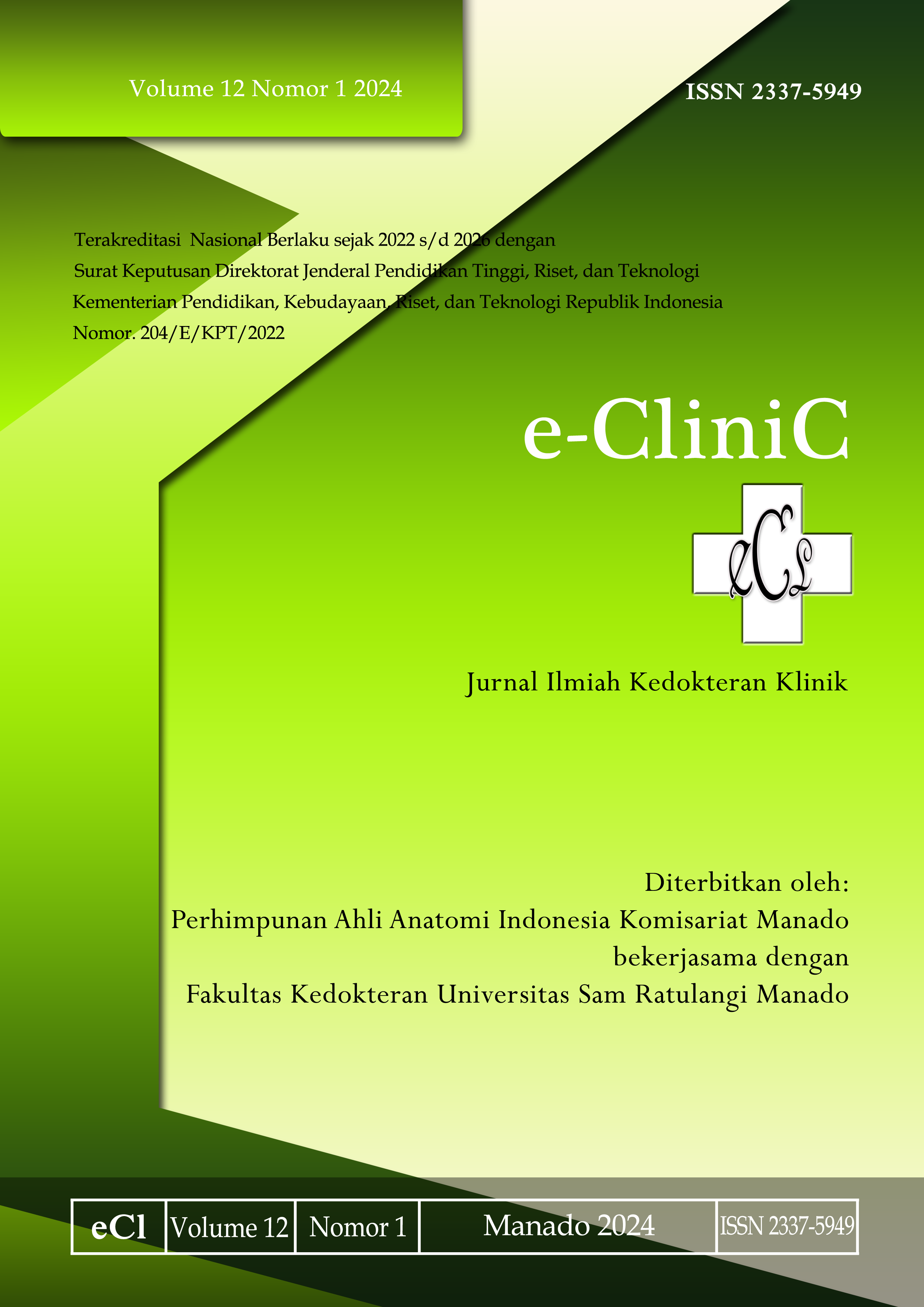Median and Ulnar Nerve Repair Using Sural Nerve Graft: A Case Report
DOI:
https://doi.org/10.35790/ecl.v12i1.46482Abstract
Abstract: Most peripheral nerve injuries (PNI) are caused by trauma. Upper extrimities are most likely to get injured, and the radial nerve is the most common part in upper extrimites to be affected. There are different surgical options available to repair PNI. We reported a 48-years-old male consulted to the Neurosurgery Department for right upper limb weakness and numbness. He had history of laceration due to iron sheeting in the right arm. There was an irregular scar, weakness on right lower arm with hypesthesia, but no neurovascular distal (NVD) abnormalities were found. Further examination showed claw hand. EMG examination revealed total lesion of the right median and ulnar nerve, partial lesion of the right radial nerve with the lesion at wrist level, possibly neurotmesis according to Seddon Classification. Initial debridement, suturing, and repairing of radial artery and flexor carpi ulnar tendon were performed. The patient was then diagnosed as total lesion of the right median and ulnar nerve, partial lesion of the right radial nerve, post repair right ulnar and radial artery and flexor carpi ulnar tendon repair with the planning of nerve graft with no complication under monitoring. The patient was scheduled for sural nerve graft procedure. Early nerve repair or reconstruction is needed even though it only results in incomplete recovery for months to years. The sural nerve is great either in diameter or length which can be a huge source for the grafting of nerve and revealed good outcomes. Recent study showed incomplete recovery especially seen when the patient could not fully clench his hand and his thumb did not move properly during the movement. In conclusion, sural nerve graft is an appropriate choice for peripheral nerve injuries with more benefits included. Prognosis depends on how early the treatment performed and how severe the lesion is.
Keywords: median nerve; sural nerve; peripheral nerve injury; nerve repair; nerve grafting
References
Menorca RM, Fussell TS, Elfar JC. Nerve physiology: mechanisms of injury and recovery. Hand Clin. 2013;29(3):317-30. Doi: 10.1016/j.hcl.2013.04.002.
Buena ITP, Fichman M. Sural nerve graft. [Updated 2022 May 8]. In: StatPearls [Internet]. Treasure Island (FL): StatPearls Publishing; 2022 Jan-. Available from: https://www.ncbi.nlm.nih.gov/books/ NBK557715/.
Talha KA, Rob CF, Selina F, Pavel MHK, Rahman N. Microsurgical anastomosis of median and ulnar nerve by sural nerve grafting. Borneo Journal of Medical Sciences (BJMS). 2020;14(3):45–50.
Young VL, Wray RC, Weeks PM. The results of nerve grafting in the wrist and hand. Ann Plast Surg. 1980;5(3):212–5. Doi: 10.1097/00000637-198009000-00006
Padilla-Reta FJ, Mendoza-Macías F, Villarreal-Salgado JL, Acosta-López JR. Secondary repair of median nerve with autologous graft of sural nerve. Case report. Rev Esp Med Quir. 2015;20(3):328-31.
Bhandari PS. Management of peripheral nerve injury. J Clin Orthop Trauma. 2019;10(5):862-6. Doi: 10.1016/j.jcot.2019.08.003.
Dahlin LB, Wiberg M. Nerve Injuries of the upper extremity and hand. EFORT Open Rev. 2017;2(5):158-70. Doi: 10.1302/2058-5241.2.160071.
Grinsell D, Keating P. Peripheral nerve reconstruction after injury: a review of clinical and experimental therapies. Biomed Res Int. 2014:2014:698256. Doi: 10.1155/2014/698256.
Downloads
Published
How to Cite
Issue
Section
License
Copyright (c) 2023 Eko Prasetyo, Maximillian C. Oley, Yovanka N. Manuhutu, Dicky Panduwinata

This work is licensed under a Creative Commons Attribution-NonCommercial 4.0 International License.
COPYRIGHT
Authors who publish with this journal agree to the following terms:
Authors hold their copyright and grant this journal the privilege of first publication, with the work simultaneously licensed under a Creative Commons Attribution License that permits others to impart the work with an acknowledgment of the work's origin and initial publication by this journal.
Authors can enter into separate or additional contractual arrangements for the non-exclusive distribution of the journal's published version of the work (for example, post it to an institutional repository or publish it in a book), with an acknowledgment of its underlying publication in this journal.
Authors are permitted and encouraged to post their work online (for example, in institutional repositories or on their website) as it can lead to productive exchanges, as well as earlier and greater citation of the published work (See The Effect of Open Access).







